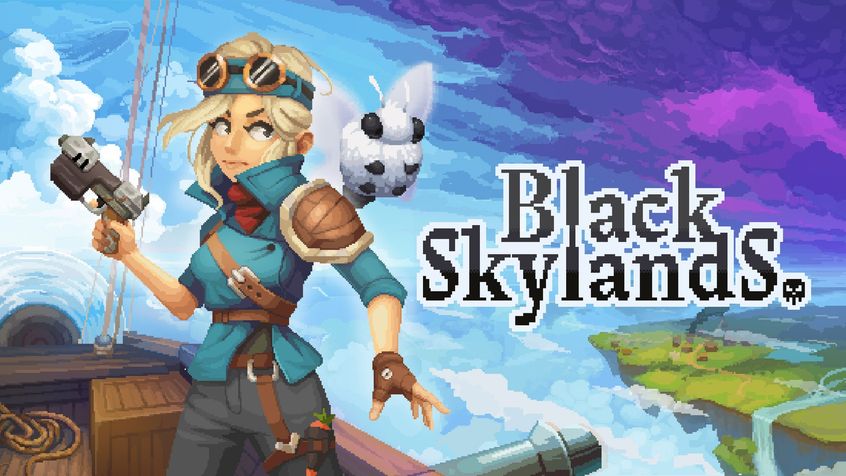Black Skylands
I spend a fair bit of time on gaming forums like /r/truegaming and /r/patientgamers, and I’ve noticed an interesting trend there. It was brought to the fore with the release of Starfield, but it’s always been there, lingering just beneath the surface. These forums don’t seem to like open world games very much.
When digging into why, the consensus seems to be that open worlds equate to empty worlds, where the size and scale of the story being told can’t possibly fill up the world that has been built, and so, the world just feels empty. While I don’t disagree with the general dislike of open world games, there is definitely merit to this argument, especially when looking at a game like Mass Effect: Andromeda . A world ought to be full of stories, and when it’s not, it’s obvious that it’s not.
I’d argue that there’s more to this sense of empty worlds than just there being nothing to engage with. A world could be full of stories and still ultimately feel hollow if the way to engage with that world is through radiant quests and reputation grinding, a la Fallout 4. A world is empty when there is no sense that there is a reason to engage with that world. That can either be because of a literal emptiness, or because the mechanics for engagement are repetitive and dull.
Despite this backlash against open world games, though, games continue to be built with open worlds and continue to tout it as a selling point. There are some games that use their open worlds well, but there are many who build these grand worlds, and never really justify the space. It leads to the question of why the world was built in the first place.
In my 60 Parsecs review, I talked about replayability, and the negative reviews that critique a game’s replayability. I see open worlds as a response to these sorts of critiques. A plot can’t really be dramatically changed in any given playthrough, but the way the player chooses to go about it, that can be. An open world is a way to provide the sense of replayability, and provide the sense that a new playthrough gives a new opportunity to approach a fresh world. It’s this principle that still keeps games like Skyrim popular, over a decade after their release, this idea that it’s less the story that matters, and more the one you create for yourself along the way. It’s not a bad approach to take, and it does work for some games, but it is a gamble, and one that doesn’t always succeed. Much like games that advertise their multiple endings, an open world needs to have some reason to be and some reason that justifies those replays, or else it just feels pointless.
Let’s talk about Black Skylands.
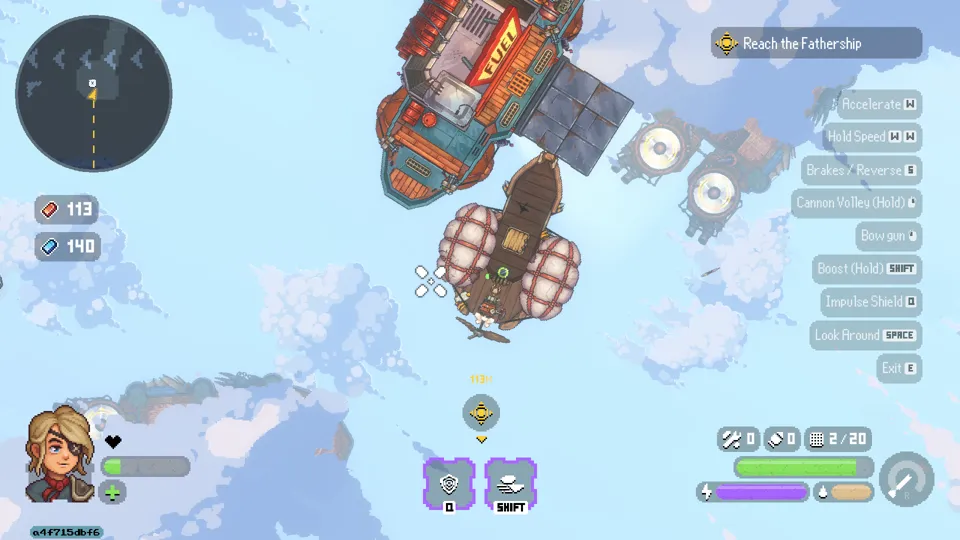 Yarr, I’m a sky pirate!
Yarr, I’m a sky pirate!
Black Skylands is a top-down action-adventure. You play as Eva, a newly minted marshal fighting against sky pirates and eldritch horrors invading her homeland. Eva commands an airship and uses this airship to fly from island to island, liberating townsfolk, smiting evildoers, and being a big damn hero everywhere she goes.
The setting for Black Skylands is fantastic. While it is a bit entertaining to see names like “Roger” and “Peter” interspersed with the fantasy names of the various kingdoms, the world as a whole is an interesting and rich one. Eva’s homeland is a colony of an empire, with that empire being at war with another land. It all feels very complete, and the context in which this story is happening feels meaningful. There are clues interspersed throughout explaining why the world is a series of islands in the sky, but it honestly doesn’t seem to matter that much. You are an airship marshal fighting sky pirates. This is all that matters.
Having the game be a top-down adventure, while an adjustment, also works very well for the setting and story being told. While the controls were a bit of a hang-up for me on touchpad, I’m fairly certain that’s because I was on touchpad, not because of any flaw of the game. The top-down approach becomes intuitive, and makes combat feel like a dance of naval models on an old war-planning table. It’s satisfying, and it worked.
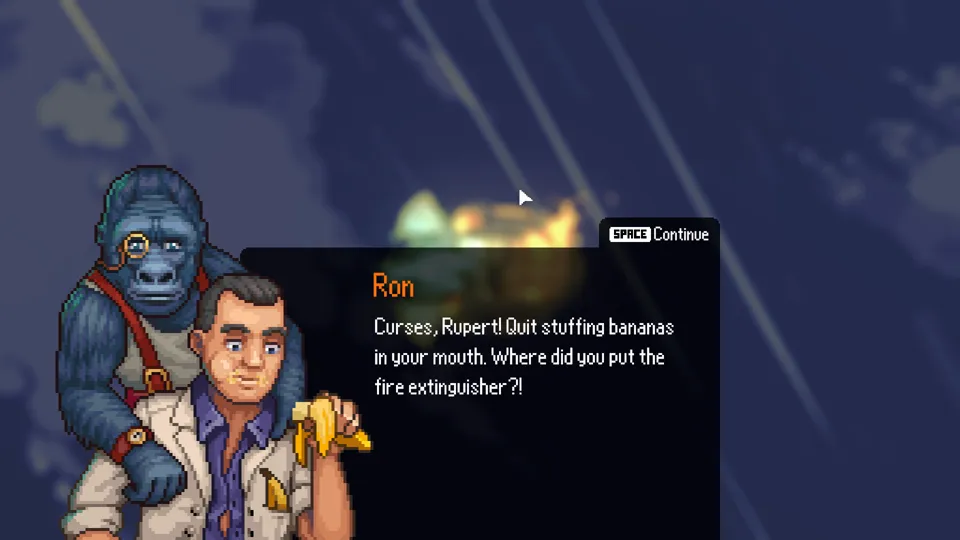 These two are obviously a couple, and I love them.
These two are obviously a couple, and I love them.
Black Skylands is also an open world game. Once the player exits the prologue, the world is theirs to explore. Islands litter the map, waiting to be liberated from pirates, with each having a unique layout and distribution of resources. The enemies are different, and the difficulty of liberating each island varies, but the player is free to liberate (or not liberate) in any order they like.
However, it’s here that we get back to the question I asked initially and that idea of what makes an open world work. Open worlds work when there is a non-empty world with reasons to engage with it. The world of Black Skylands is far from empty. Each island presents its own adventure, and the sky between them has pirates to harass and a fun little fishing minigame. It’s that idea of a reason to engage with the world, though, that got me thinking about open worlds in the first place.
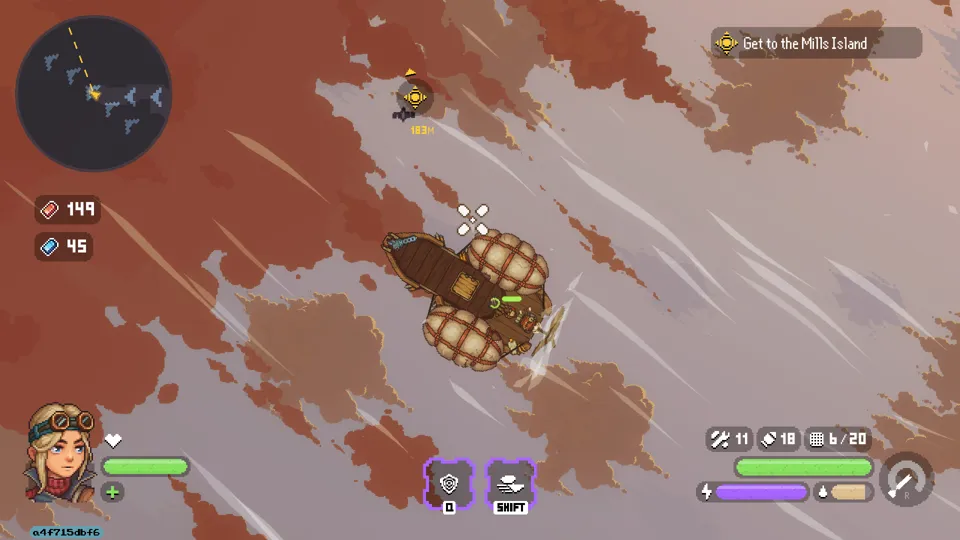 Drift gently, fair raft, into a sea of clouds
Drift gently, fair raft, into a sea of clouds
Black Skylands has a fairly straightforward gameplay loop. Eva is sent an emergency message to liberate a particular island. She liberates that island, returns to the main base, then receives another message. Rinse, repeat, revolution. There’s nothing forcing Eva to go to the island she’s been told to liberate - she can go to any island she likes. However, the plot progresses only when that particular island is liberated.
I mentioned in my intro that there are two ways an open world game can feel empty. The first is that it actually is empty, like Mass Effect: Andromeda, that there are vast swathes of world and no real reason to engage with any of it. The world is just padding to force the player to be in the game as long as possible. That’s not the case in Black Skylands. The world is dynamic and alive, and I legitimately had a grand time in my airship battles and random encounters that I had on my way to whatever destination I had set for myself.
The second way an open world game feels empty is for it not to have a reason to engage, or for that reason to be forced or pointless. I again cite Fallout 4 and its faction quests as an example of this, where just reputation grinding or doing the same thing over and over isn’t a compelling reason to engage with a world. It makes the process of engagement feel tedious and reminds the player too strongly that they are not this heroic game character, but instead, just someone playing a game.
Black Skylands falls into this second trap. After my fourth or fifth island, I realised what I was doing. I would go out, liberate an island, then return to base to empty my hold and buy my upgrades so I could set right out again. The individual islands had no quests or reasons to visit any one in particular. They were just islands full of mooks to kill, with no greater purpose. Even if I wasn’t reputation grinding or one of those other mechanics that render a game hollow, I was still just doing the same thing over and over. Even if the island changed, the process never did. I’d veni, vidi, vici, empty my hold, and do it all again. As well-built as the setting was, and as fun as the mechanics could be, the world itself was a static one, devoid of life, because it was devoid of stories or a reason to see any part of it as different from any other part.
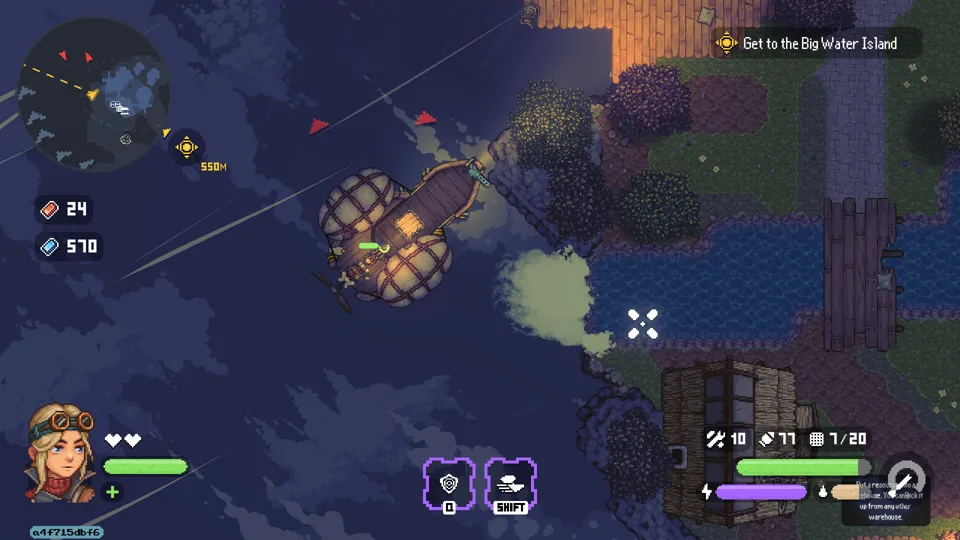 I feel like that waterfall is going to cause problems at some point.
I feel like that waterfall is going to cause problems at some point.
Games benefit when there is a reason behind their design decisions. Skyrim, for instance, is an open world game because there are more stories than the main quest, and the story it tells it not that of the main quest, but of the Dragonborn and their adventures in this land. Fallout: New Vegas is similar, with it not being a story about the fate of New Vegas, per se, but rather, about the Courier and how they shape that future. Games whose purpose is a story of a place or event benefit less from an open world than games whose purpose is a story of a person. Open worlds work when they can be filled with a personality, and fail when they distract from the story.
The open world of Black Skylands distracts and detracts from its story. The particular story of the islands I’m liberating matters less and less when it’s the fourth island I’ve liberated that day. They don’t feel special when they look exactly the same as every other island, and I’m going to do the same thing I did every other time immediately after. As fun as the mechanics and world of Black Skylands is, it falls apart as a game once the player realises the world is full of nothing but filler.
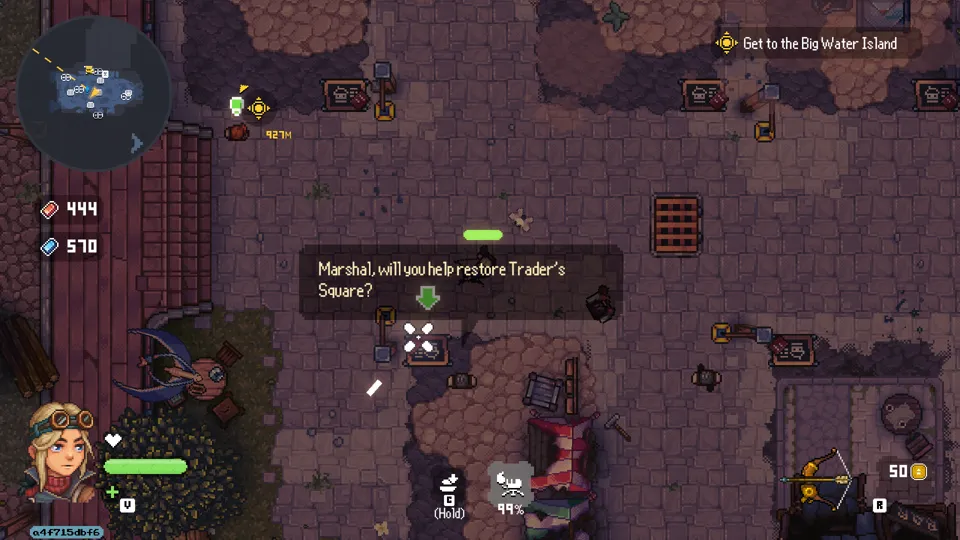 I see you, endless series of fetch quests.
I see you, endless series of fetch quests.
I enjoyed Black Skylands, don’t get me wrong. The combat is fun, and the world is a creative one. I set it down, though, when I got tired of wandering a lifeless world. For all the beauty of the clouds and the creatures, the knowledge that I was filling time between identical battles wasn’t enough to keep me engaged. The open world works against Black Skylands here, making what should be a vibrant world feel hollow.
Developer: Hungry Couch Games
Genre: Action Adventure
Year: 2023
Country: Serbia
Language: English
Play Time: 18 Hours
Youtube: https://youtu.be/xht5myBf9Nw
